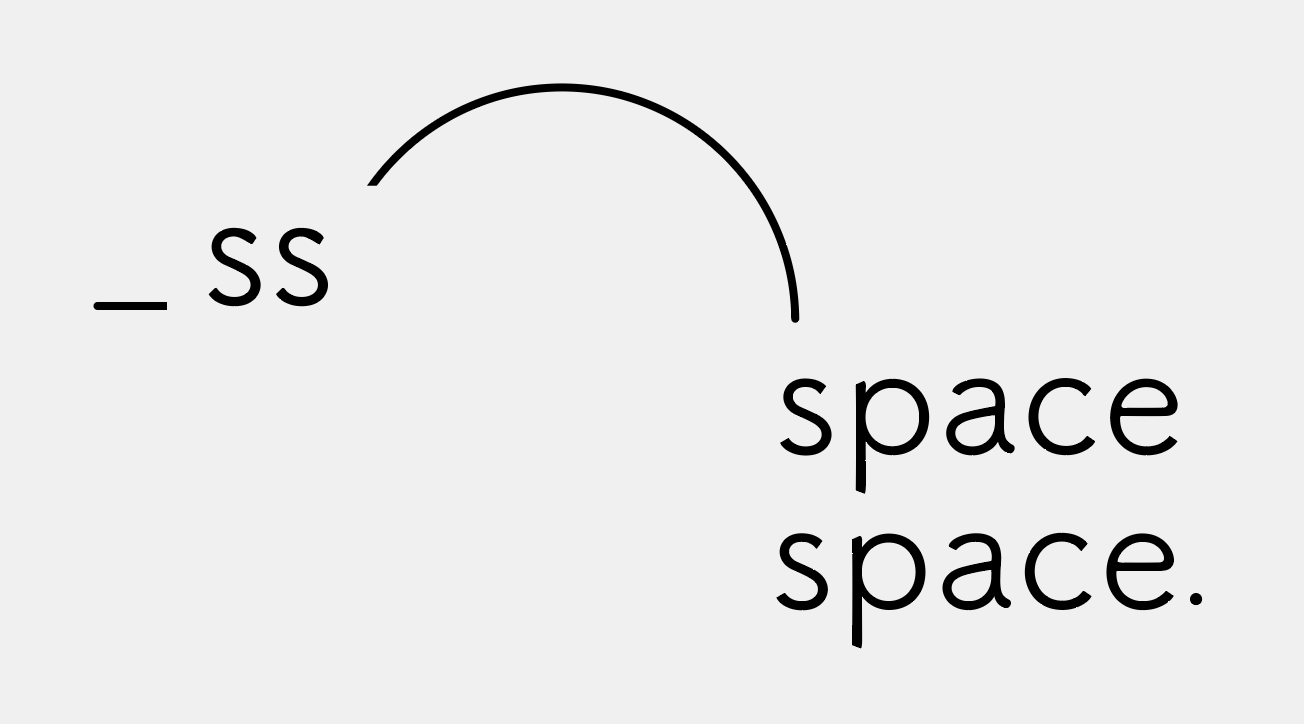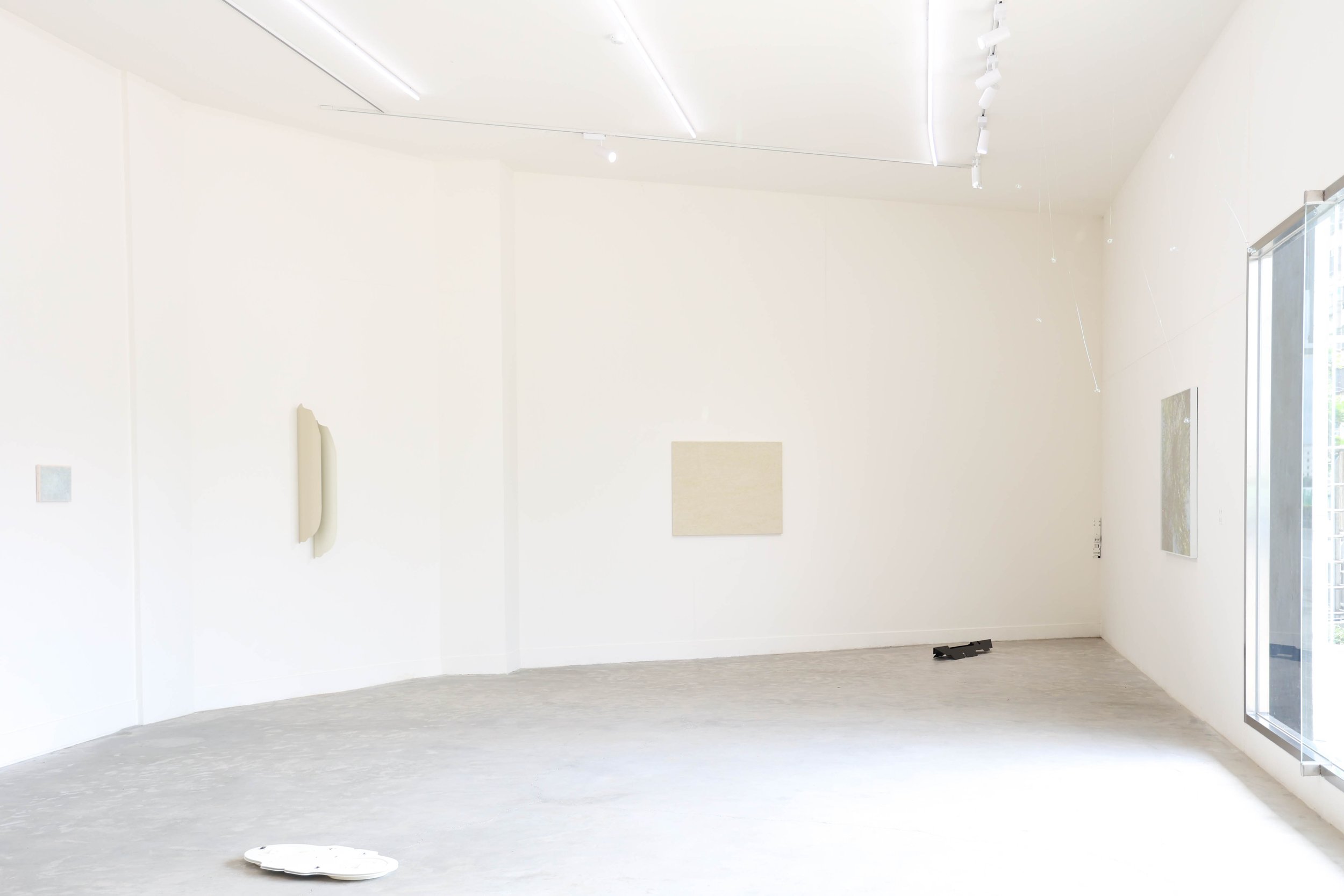ss space space is pleased to announce its first-anniversary group exhibition, titled '𝙈𝙤𝙫𝙞𝙣𝙜 𝙈𝙚𝙩𝙖𝙥𝙝𝙤𝙧𝙨: 𝙍𝙚𝙢𝙖𝙥𝙥𝙞𝙣𝙜 𝙈𝙤𝙤𝙧𝙞𝙣𝙜𝙨.' This exhibition features the works of artists Amba Sayal-Bennett, Nai-Jen Yang, Sean Tseng, and Te-Yu Wang. The exhibition comprises over twenty pieces, including sculptures, paintings, photographs, and site-specific installations, and aims to explore the fluidity between 'light' and 'heavy,' 'speed' and 'stillness,' and the manner in which elements intertwine and generate tension through movement. This exhibition extends the research initiated in last year's opening exhibition, ‘𝙈𝙤𝙫𝙞𝙣𝙜 𝙈𝙚𝙩𝙖𝙥𝙝𝙤𝙧𝙨: 𝙏𝙝𝙚 𝙂𝙚𝙣𝙚𝙨𝙞𝙨 𝙤𝙛 𝙖 𝙎𝙥𝙖𝙘𝙚,’ examining how artists carve out open fields for imagination through their works. It invites viewers to engage with the metaphorical spaces suggested by the works, reshaping their understanding of the world within the dynamic field of meaning construction.
In Amba Sayal-Bennett's work, she frequently investigates the movement of bodies, knowledge, and forms across various realms, employing materials, shapes, and colours as methods for abstract perception. Her recent pieces focus on the transformation of modernist forms, informed by studies of Fascist and Brutalist architecture. These works reflect the temporal and spatial dimensions and material applications suggested by architecture, challenging the once-unshakeable power and historical significance of these structures, and exploring the 'interpretive space' absent in homogeneous modernist environments. For the artist, this space is not merely a mediating, directional area but a field accommodating the flow of meaning.
In Nai-Jen Yang’s practice, she views the canvas as a 'translation of experience'. In her four exhibited paintings, she utilises rabbit skin glue as a base, deliberately preserving the canvas's natural colour and texture. Through gentle, repetitive brushstrokes, she delicately fills the canvas space. The artist endeavours to preserve exposed areas amidst layered applications, extracting nuanced qualities from the materials. This approach reflects Yang's contemplation on space and the canvas as a metaphor for accessing alternative realms.
The act of clearing or appropriating space allows the metaphors and narratives of things to interact between the vast and occupied spaces, opening up possibilities for dynamic spatial thinking. In Te-Yu Wang's installation works, she places extremely lightweight lines in the transitional 'public spaces' of the exhibition area. Through the viewers' movement and touch within the space, the works are subtly disturbed, sketching out the simultaneous presence of air, breeze, light, material texture, and gravity. The artist guides the flow of the on-site space and the body with minimal materials, allowing the existence of things to emerge from potential spaces in a serene yet highly tense manner.
In Sean Tseng's works, the body transcends its role as a mere container of space and time, actively engaging in the processes of creation and observation through perceptual guidance and spatial displacement. This interaction establishes new narrative starting points within the space. Tseng's practice often originates from the interplay between elements in the natural environment, engaging with them through bodily experiences. His recent works, encompassing sculptures and photography, meticulously capture specific moments in the natural environment, reflecting his exploration of spatial transformations and the rhythms of social time embedded within its various cadences. This presentation underscores the coherence of vitality amidst the tensions inherent in interactions between elements.
Imagining contemporary society as a structure composed of movements with varied rhythms, our bodies act as bridges between the subject and the world in social space. Reflecting on recent social and environmental changes, including post-pandemic reconstruction, the impacts of war, shifts in immigration policies, Brexit, the rise of authoritarian politics, climate change and refugees, the global community continually adjusts the rhythms of living spaces between motion and stillness, synchrony and asynchrony. This necessitates a reconsideration of our societal positions. The first-anniversary group exhibition, '𝙈𝙤𝙫𝙞𝙣𝙜 𝙈𝙚𝙩𝙖𝙥𝙝𝙤𝙧𝙨: 𝙍𝙚𝙢𝙖𝙥𝙥𝙞𝙣𝙜 𝙈𝙤𝙤𝙧𝙞𝙣𝙜𝙨,’ seeks to pose inquiries within this framework: In an era marked by human flux and challenges, how can we pause to reconstruct meaning and identity within the perpetual flow of time and space? How do we navigate new directions and perspectives in a complex and ever-evolving world?
ss space space 一週年聯展以「移動的隱喻:重新定位」為題,邀請藝術家安巴・塞亞爾・班奈特(Amba Sayal-Bennett)、楊乃臻(Nai-Jen Yang)、曾彥翔(Sean Tseng)及王德瑜(Te-Yu Wang)參與展出。此次聯展展出作品包括雕塑、繪畫、攝影與空間裝置等二十餘件,試圖開展作品在「輕」與「重」、「速度」與「停留」之間的流動,並從中探索事物在移動過程中如何與他者交織並產生張力。本次展覽延續去年開幕展覽「移動的隱喻:一個空間的生成」的研究方向,觀察藝術家如何透過作品鑿開了供給想像傾注的開放場域,並邀請觀者向著作品所隱喻的空間前行,在意義構築的流動場域中重塑對世界的理解。
在安巴・塞亞爾・班奈特(Amba Sayal-Bennett)的創作中,她經常透過作品探討身體、知識與事物形態如何於不同場域之間移動,並且將創作媒材、形狀與顏色視作為抽象感知的翻譯方法。此次展出的作品是藝術家聚焦於現代主義形式的轉換,透過法西斯和粗獷主義建築(Fascist and Brutalist Architecture)的研究,在作品中表現建築所隱喻的時空維度與材質應用形式,並從中翻轉了這些建築曾經不可動搖的權力及其於歷史定義的重量,進而探索均質的現代主義空間所欠缺的「詮釋空間」。對於藝術家而言,此空間是不僅是一種仲介、有方向性的場所,更是一個容納意義流動的場域。
藝術家楊乃臻(Nai-Jen Yang)則將畫布空間視為一個「經驗轉譯」的場所。此次展出的四件系列繪畫作品中,她僅使用兔膠打底,特別保留繪畫布料本身的顏色與紋路,並在創作的過程中,用輕柔且重複的筆觸覆蓋畫面、纖巧地佔據畫布空間。藝術家試圖在重複覆蓋的繪畫過程中同時保有留白揭露的空間,並且在材質的重中提取出輕的特質,在此便可看見藝術家既有對於抹除空間的思考,也將繪畫空間視為通往其他場所的隱喻。
而將空間清空或是挪用空間的動作,則得以讓事物的隱喻與敘事在空間的留白與佔據之間進行互動,打開對空間動態思考的可能。藝術家王德瑜(Te-Yu Wang)在此次展出的裝置作品〈飛螢〉中,她將無比輕巧的線材設置於展場過渡的「公共空間」中,透過觀者身體在展場中的移動與碰觸,誘發作品細膩擾動,進而勾勒出空氣、微風、光線、材料質地與重力等事物的同時存在的形態。藝術家在極簡的材料中引導現地空間與身體的流動,並以寧靜卻極富張力的方式讓事物的存在從潛在空間顯現。
在觀看藝術家曾彥翔(Sean Tseng)的作品時,身體不再僅僅是空間與時間的容器,而是通過感知的指引與觀看時的位移,成為創作與觀看歷程中的積極能動者,進而從停留的空間中創造出新的敘事起點。曾彥翔的創作多從⾃然環境中物與物之間的關係為起點,並透過⾝體經驗的參與,與事物在所⾒、所及與所感之處相遇,進而在萬物與身體的關係之中重新認識觀看與感知。此次展出的雕塑與攝影作品是藝術家近年對於其在自然環境中特定時刻的細膩描繪,也是藝術家透過其創作實驗,在自然環境的多重韻律之中觀察空間構成的變樣與社會時間的節奏,並從事物互動的張力中呈現生命力的凝聚。
想像今日社會是由不同韻律的移動所構成的結構,而我們觀看的身體則是社會空間中作為主體與世界的橋梁。回望近年的社會環境變遷,包括疫情後的重建、戰爭的影響、移民政策的轉變、英國脫歐、極權政治的擴張,以及氣候變遷與難民等問題,整個世界在這些移動與靜止、同步與不同步之間,不斷更新生活空間的韻律,進而迫使我們重新思考自身在社會中的立足之地。本次一週年聯展「移動的隱喻:重新定位」希望能從此脈絡中拋出問題:在人類歷經變動與挑戰的時代,我們如何在不斷流動的時間和空間中暫歇以重建意義和身份,並在複雜多變的世界中尋找新的方向和定位。






